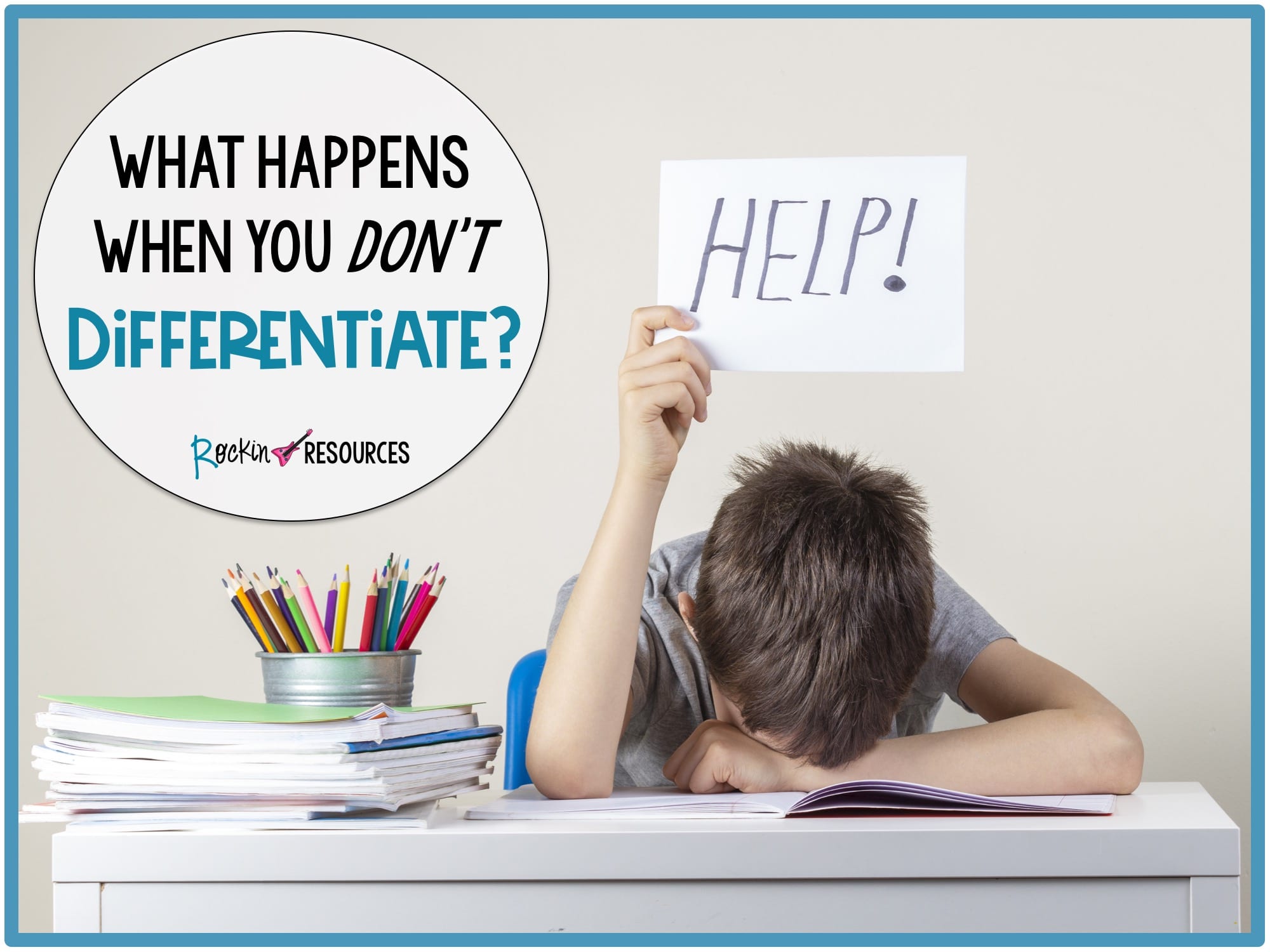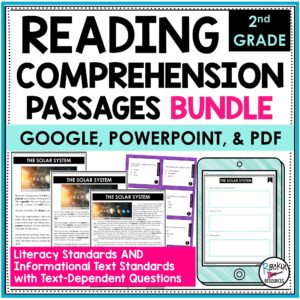Differentiation is a hot topic in education. Most teachers are determined to meet the diverse needs of their students, but they may struggle to streamline their differentiation. You will find suggestions for the differentiation dance so you can find the best rhythm for your students!
1. MAKING PRE-ASSESSMENTS WORK
Pre-assessments often feel like a time-consuming hurdle, but they are key to effective differentiation. Teaching what students already know—or aren’t ready for—wastes valuable instructional time. Instead, use quick, targeted pre-assessments to gauge where each student stands.
A formal screening at the start of the year helps establish initial groups, but ongoing, informal check-ins—like entrance slips or “Tell Me What You Know” prompts—keep instruction relevant. Smaller units require less pre-assessing, but frequent, simple assessments help you adjust learning groups as needed.
Remember, differentiation isn’t about fixed groups—it’s about adapting to students’ strengths and needs as they grow. Everyone in your classroom will not be at the same point in their knowledge or learn the same way.
Pre-Assessment Take Away:
- Put in the time.
- Keep them short and frequent.
- Use them to direct instruction.
- Use them to shape differentiation groups.
2. THE POWER OF DIRECT INSTRUCTION
Some argue that direct instruction isn’t engaging, but research proves otherwise. When done well, it’s dynamic, interactive, and highly effective. Studies, including Hattie’s 2017 Ranking, show direct instruction leads to significant student achievement—outperforming even one-on-one technology and self-regulation strategies.
Direct instruction also supports differentiation. After pre-assessments, establish a common goal and scaffold lessons to meet diverse needs. Provide varied reading levels, differentiated tasks, and small-group support while maintaining a shared objective. When students start together but receive personalized support, engagement and success soar!
Direct Instruction Take Away:
- Direct instruction has a place in differentiation.
- It is a highly effective method to foster student achievement.
- Find one common objective, but adapt instruction and deliverables for small groups.
- Direct instruction will continue within small groups.
3. DIFFERENTIATING NOTETAKING
Notetaking can be challenging, especially for students with learning differences like dyslexia. Instead of a one-size-fits-all approach, offer multiple ways for students to engage with notes. Use bullet points, highlighting, and sentence frames to guide key information. Provide printed copies or photos of anchor charts for students who struggle with writing. Some may prefer interactive notes, while others thrive with structured templates. Differentiation in notetaking ensures all students can access and retain the material effectively.
Notetaking Take Away:
- It isn’t a one-size-fits-all
- Offer cues and differentiation for notes like sentence frames or copied notes.
4. HELPING STUDENTS STAY ORGANIZED
For some students, organizing thoughts and grouping concepts can be overwhelming. Graphic organizers are powerful tools that help students structure ideas, make connections, and build confidence in their writing. Offering a variety of organizers—such as mind maps, Venn diagrams, and story outlines—allows students to choose what works best for them. By integrating organizational supports, we empower students to process information more efficiently and set them up for success.
Organization Take Away:
- Build confidence in writing
- Offer graphic organizers as a tool to help with ideas and connections.
5. MAKING SMALL GROUP INSTRUCTION WORK
Grouping students can feel chaotic, but when done right, it enhances learning rather than disrupts it. Small groups in differentiation aren’t about fostering leadership—they’re about meeting students where they are. Grouping by ability or learning style helps struggling students get the support they need without slowing down others. Some students may learn best with hands-on activities, while others excel through reading and comprehension questions. Flexible grouping ensures every student benefits.
To keep groups running smoothly:
- Establish groups for one unit at a time and adjust as needed based on assessments.
- Use clear instructions for each group—mini whiteboards work well for posting tasks.
- Set progress checks every 7-10 minutes to maintain focus and accountability.
- Rotate between groups to support, enrich, or scaffold as needed.
- Assign group leaders, rotating roles to build independence and confidence.
Worried about ability-based grouping? Research shows it boosts student achievement when done flexibly. As Brulles and Brown explain in “A Teacher’s Guide to Flexible Grouping and Collaborative Learning,” grouping is meant to be flexible, not forever! Regular reassessments prevent students from getting “stuck” and allow movement between groups as they progress. Small group instruction, when structured well, is a powerful way to differentiate and drive success for all learners.
Group Work Take Away:
- Post clear goals for each group and check in frequently.
- Groupings are flexible and change as needed.
- Reassessments prevent students from getting stuck.
6. RETHINKING ASSESSMENT
Assessment is a key part of differentiation, guiding both instruction and student groupings. Traditional paper-and-pencil tests aren’t the only way to measure understanding—consider creative performances, portfolios, or hands-on demonstrations. Even standard quizzes can be adapted with fewer questions, word banks, or sentence frames to support diverse learners.
Grouping should also be flexible, changing based on assessments to reflect students’ evolving strengths and weaknesses. Avoid static groups—regularly reshuffle students to encourage peer learning and social growth. Let struggling students lead when possible and challenge high achievers to teach others. Frequent regrouping ensures differentiation isn’t just about instruction but also about opportunity.
Assessment Take Away
- Assessment drives instruction and grouping.
- Change groupings based on continual assessments and mastery.
- Keeping groupings flexible through assessment offers opportunities, socially and scholastically.
DIFFERENTIATION: WORTH THE WORK
Differentiation is a complex yet rewarding aspect of teaching. It requires ongoing effort and adaptability, but the impact on student engagement and learning is undeniable. While differentiation presents challenges, it also elevates instructional effectiveness, ensuring that all students receive the support they need to succeed. As educators, we embrace the hard work because it leads to meaningful growth—for both our students and ourselves. Mastering differentiation not only enhances student outcomes but also sets you apart as an exceptional educator committed to maximizing every learner’s potential.
For more posts on differentiation, click HERE!
GO ROCK YOUR TEACHING!
Now that you know about the reading comprehension passages with questions, TRY THEM OUT! Click on your grade level to GET YOUR FREE DOWNLOAD sent straight to your inbox.
SEE RELATED BLOG POSTS:
DISCOVER RELATED RESOURCES:
-
2nd Grade Reading Comprehension Passages Bundle
Original price was: $41.99.$24.99Current price is: $24.99. -
3rd Grade Reading Comprehension Passages Bundle
Original price was: $41.99.$24.99Current price is: $24.99. -
4th Grade Reading Comprehension Passages Bundle | GOOGLE
Original price was: $41.99.$24.99Current price is: $24.99. -
5th Grade Reading Comprehension Passages Bundle
Original price was: $41.99.$19.99Current price is: $19.99. -
Reading Skills Bundle for Reading Comprehension
Original price was: $14.97.$12.00Current price is: $12.00. -
Step-by-Step Reading Skills for Reading Comprehension Bundle 1
Original price was: $83.92.$68.99Current price is: $68.99.
Some references that would be helpful:
https://www.freespirit.com/files/original/Flexible-Grouping-Collaborative-Learning-preview-1.pdf
https://www.edweek.org/tm/articles/2013/05/20/fp_olszewski.html
















